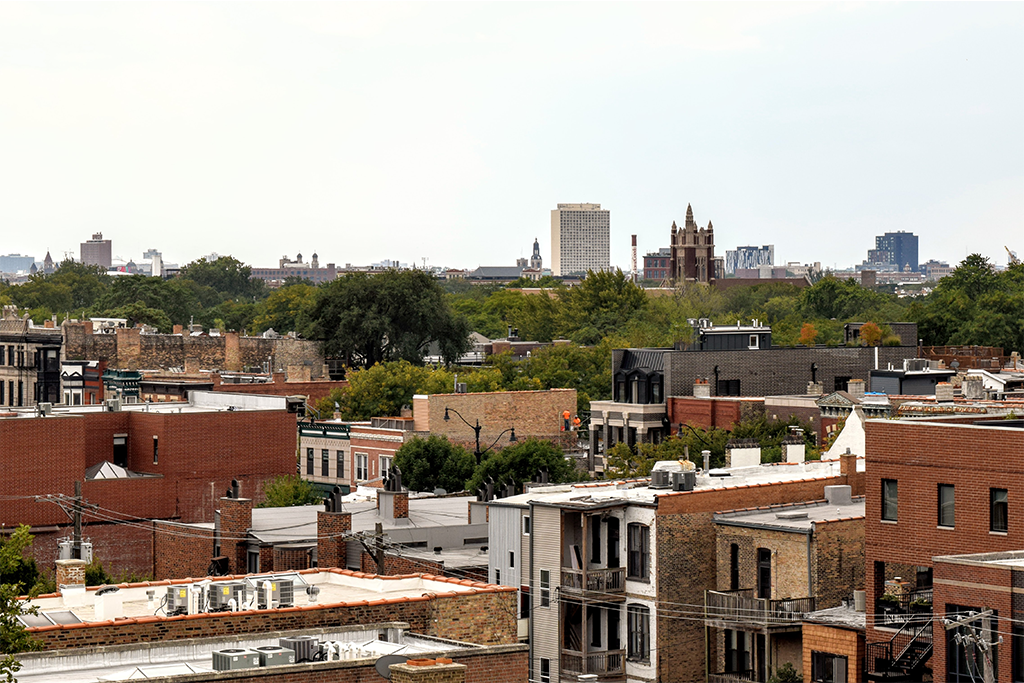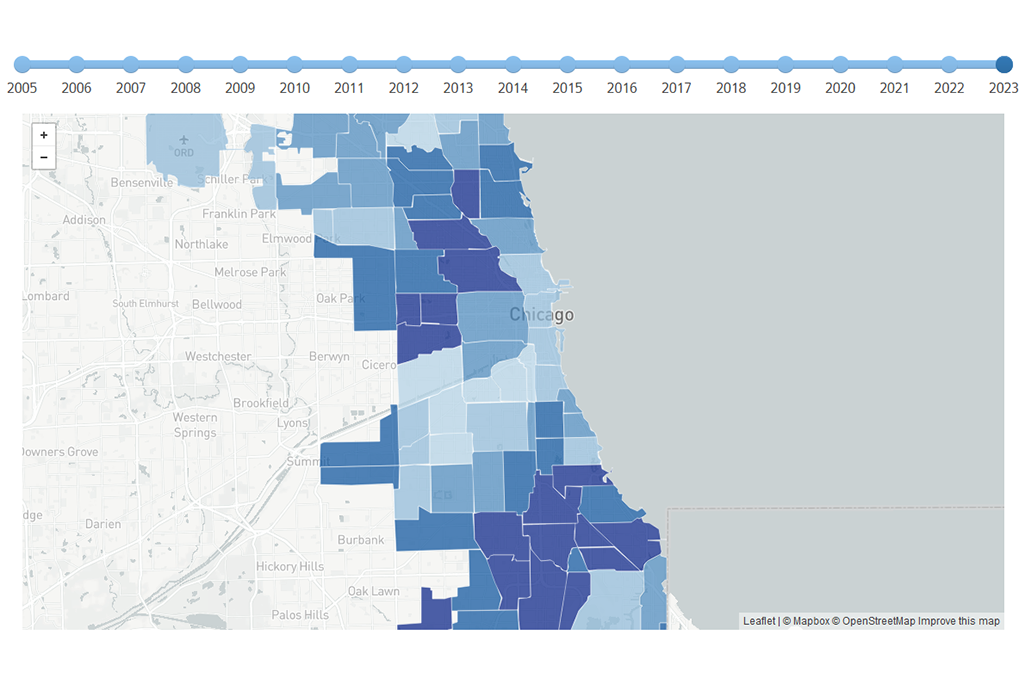Photo: Evelyn Ryan
The 2023 Chicago municipal election has left the city with a substantially changed political landscape. In addition to a City Council with 16 newcomers, Chicago’s newly elected mayor, Brandon Johnson, promoted an ambitious agenda to tackle many of the city’s biggest challenges. Among these challenges is a range of housing and housing affordability problems. According to IHS research, 47.4 percent of Chicago renters are cost-burdened (spending more than the recommended 30 percent of their annual income on housing). Additionally, a recent poll found that the vast majority of Chicagoans feel the city does not have enough affordable housing, and approximately a third of residents describe their housing situations as unstable.
Incoming leadership in both City Hall and the City Council have an opportunity to address these issues, though IHS research has indicated that the city’s housing affordability crisis has some unique characteristics that should be considered when creating policy solutions. Although these issues do not encompass the entirety of the city’s housing and community investment challenges, our research sheds light on some of the reasons why residents are having difficulties finding affordable rental housing, buying homes, and maintaining their current residences.
Challenge 1: Loss of Affordable Rental Supply
For the past decade, the share of Chicago households that rent has remained relatively stable, but the characteristics of renter households have shifted. The number of higher-income renters has increased since 2012, corresponding with a decrease in the number of very low-income renter households. The city has also experienced a significant loss of lower-cost rental units, many of which were part of Chicago’s important stock of unsubsidized, lower-cost rental housing (often called “naturally occurring” affordable housing). Increased affordability pressures are therefore not necessarily due to a rise in the number of renters, but rather a loss of rental units affordable for low-to-moderate-income residents.
IHS research has shown that a significant portion of Chicago’s lost rental units were in 2 to 4 unit buildings. Historically, these iconic Chicago structures have been a pathway for expanding homeownership, especially among the city’s Black and Latino populations. In addition, 2 to 4s also play a crucial role in the rental market as they are more likely to be affordable, offer family-sized units, and be located within communities of color. Small-scale, long-term owners are often less profit-motivated and maintain closer relationships with their tenants that larger-scale property owners, which likely also helps to keep rents more affordable. However, these properties are typically older and require maintenance, which can be challenging for small-scale owners to pay for upkeep while also keeping rents affordable.
Unfortunately, the supply of 2 to 4s is under pressure and steadily shrinking, as seen in Figure 1. In higher-cost neighborhoods, these buildings are often being replaced by single-family homes, through either conversion or demolition. In lower-cost markets, 2 to 4s are commonly demolished due to foreclosure, vacancy, or abandonment, and become vacant lots. Regardless of the neighborhood context, once the building is lost, it is difficult to replace. The convergence of these different dynamics has exacerbated affordability pressures and points to the need for strategies supporting the preservation of this critical Chicago housing type.
Figure 1. Change in 2 to 4 Unit Parcels in the City of Chicago by Neighborhood Market Type, 2013 to 2019
Source: Cook County Assessor/IHS Data Clearinghouse
Challenge 2: Rising Costs for New and Existing Homeowners
Chicago’s homeowners are not immune to the city’s affordable housing crisis. Though house price growth started to slow during the second half of 2022, pandemic gains have left prices much higher than they were a few years ago. While price growth can be beneficial for existing owners by improving levels of home equity, they also make it more difficult to find affordable properties to purchase. High mortgage rates have reduced the buying power of prospective homebuyers, while a limited inventory of homes is keeping prices high despite cooling demand. These struggles highlight the need for innovative programs to increase the supply of for-sale housing that is affordable for modest-income homebuyers.
Existing homeowners also face rising costs, especially in the form of higher property taxes and increasing home improvement needs. Rising property taxes can particularly affect modest-income homeowners and long-term owners in neighborhoods with rapidly rising values. These increases can tighten budgets, leading some property owners to delay necessary maintenance or home improvement needs. As Chicago’s housing stock ages, homeowners must be able to maintain and repair their properties, which can be challenging for those with limited finances or home equity, highlighting the importance of programs that support modest-income homeowners' abilities to make home improvements.
Challenge 3: Housing Needs of Older Adults
Following nationwide trends, the number of older adult homeowners in Cook County is growing. Older adult households in Chicago are increasingly more likely to be Black or Latino, lower-income, and live alone. In addition, despite older adults having the highest homeownership rates of any age group, the 65-74-year-old age group has seen the fastest increase in rental rates. However, IHS research has shown that older adults are experiencing affordability struggles, whether they rent or own. Rent increases are creating new financial burdens for older tenants, and a larger segment of older homeowners carry more mortgage debt than in years prior.
Many older adults are living on low or fixed incomes, making it difficult to contend with housing cost increases. Moreover, many seniors want to age in place but often live in older housing that requires substantial modifications to account for limited mobility or other age-related ailments, which also implies extra costs. Given the shortage of affordable and accessible units, it is clear that addressing housing needs for older adults must be a priority for the city.
Moving Forward
Any policy intervention that seeks to address the needs of renters, homeowners, or older adults can benefit from an in-depth understanding of housing market conditions across the city and the various strategies that can be used to ensure affordability in different neighborhoods. To learn more, follow IHS' work, which uses applied research and data to highlight these conditions and their connections to emerging housing and community development challenges.






